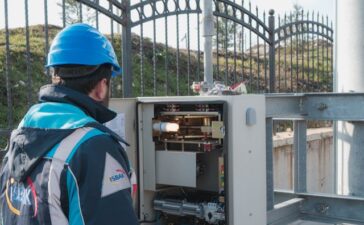Are you searching for a natural cure because you have sinus congestion? Consider using a humidifier instead! These practical tools can moisten the air, easing tightness and easing dry sinuses. But which one ought to you pick? We’ll examine some of the Best Humidifiers ,their benefits and drawbacks, and suggest the best sinus treatment solutions in this blog article. With these essential humidifiers, you can wave goodbye to congested nostrils and say hello to simple breathing!
The Various Humidifier Types
There are Best Humidifiers For Sinus Problems available on the market, each with special characteristics and advantages of its own.
A fan is used to move air over a wet wick or filter, which causes it to evaporate and add moisture to the air, which is how evaporative humidifiers operate. High-frequency vibrations are used by ultrasonic humidifiers to transform water into tiny mist particles that are then dispersed into the atmosphere. Cool mist humidifiers discharge a visible cool mist through a nozzle, whereas warm mist humidifiers boil water to produce steam that is subsequently released into the room.
When it comes to performance, maintenance requirements, and cost-effectiveness, each variety has pros and cons. For instance, ultrasonic units can operate quietly but may require more cleaning than other kinds while evaporative versions need regular filter changes but do not emit white dust as others can.
In the end, your particular tastes should be taken into account when deciding which kind of humidifier is ideal for you this winter.

Advantages and Drawbacks of Using a Humidifier
The use of a humidifier can affect your health in both good and bad ways. Here are some advantages and disadvantages:
Advantages: Humidifiers make the air more humid, which helps lessen the symptoms of dry skin, sinuses, and throat. Additionally, they can lower static electricity levels in your house and stop furniture from splitting due to dryness.
Cons: If humidifiers are not regularly cleaned, mould and bacteria can thrive there. This may cause respiratory issues or exacerbate pre-existing diseases like asthma or allergies. In addition, overusing a humidifier can increase indoor humidity, which can create condensation on windows and walls and possibly cause structural damage to your home.
Use a hygrometer (a device that detects humidity levels) in conjunction with your humidifier to ensure that you don’t go beyond the recommended ranges of 30–50% of humidity in order to avoid these problems. Additionally, routine cleaning is crucial; strive for at least once a week if used often.
A humidifier can be helpful, but only when it is properly maintained.

How to Use a Humidifier to Get Rid of Sinuses
Although using a humidifier to relieve sinus pain is quite simple, there are a few key considerations. Priority one should be given to selecting the ideal humidifier for your requirements. Whether you choose an evaporative or an ultrasonic type, be sure it has a range of settings so you can control the humidity in your space.
Next, make sure your humidifier is situated correctly. Place it at least three feet away from furniture and walls for optimal effects. By doing this, the mist will be distributed equally around the space.
Use distilled water whenever you refill your humidifier to avoid mineral accumulation inside the device. Additionally, remember to frequently clean your humidifier! Mould development and other unpleasant problems may result from skipping this step.
Consider how long you should let your humidifier run each day. While humidifiers are helpful for temporarily relieving dry sinuses, overusing one can worsen symptoms by encouraging bacterial growth and adding too much moisture to the air.
You’ll be well on your way to breathing comfortably every day if you stick to these easy instructions for effectively using a humidifier for sinus relief.





